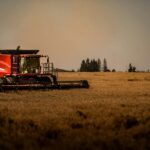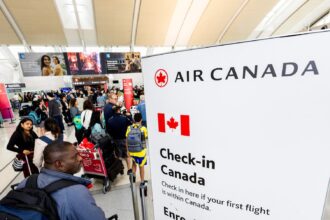In the shadow of the majestic Rocky Mountains, Alexis Nakota Sioux Nation elder Roy Louis watches as another tour bus departs with fewer passengers than last year. “We built something beautiful here, something authentic,” he tells me, gesturing toward the cultural center that once bustled with American visitors. “Now we’re wondering if we can keep the lights on through winter.”
This scene is playing out across Canada as Indigenous tourism operations face an unprecedented dual challenge: a marked decline in American visitors and significant federal funding reductions. The Indigenous Tourism Association of Canada (ITAC) reports a 23% drop in US visitors to Indigenous tourism sites in the first half of 2025, while simultaneously grappling with a $2.7 million reduction in federal support.
“We’re experiencing a perfect storm,” explains Keith Henry, President and CEO of ITAC. “Just as our sector was rebounding from pandemic disruptions, we’ve been hit with this combination of decreased American travel and budget cuts that threatens to undo years of progress.”
The economic implications extend far beyond individual businesses. Indigenous tourism contributed approximately $1.9 billion to Canada’s economy in 2023, employing over 39,000 people and supporting cultural preservation initiatives in hundreds of communities. Those numbers had been projected to grow to $2.5 billion by 2026, but current trends suggest a contraction instead.
Analysis of border crossing data reveals that American visitors to Canada have declined 17% overall, with higher rates in areas dependent on drive-market tourism. The strengthening US dollar against the Canadian currency was expected to boost cross-border travel, but industry experts point to increased competition from international destinations and changing travel preferences.
“Americans have more options than ever,” notes Tzeporah Williams, tourism economist at the University of British Columbia. “Post-pandemic, they’re seeking experiences that feel novel after years of restrictions. Unfortunately, Canada’s tourism marketing budgets haven’t kept pace with aggressive campaigns from countries like Iceland, Portugal, and Japan.”
Meanwhile, Ottawa’s reduced funding to ITAC has forced the organization to scale back marketing initiatives, business development support, and cultural authenticity programs. This comes at a critical juncture when many Indigenous tourism operators had invested heavily in expansion based on pre-pandemic growth trajectories.
In Wendake, Quebec, entrepreneur Sarah Ruperthouse has postponed the opening of an expanded cultural center. “We secured private financing based partly on the assumption of continued government support for the sector,” she explains. “Now we’re recalculating everything and trying to determine if we can proceed at all.”
Federal officials defend the funding changes as part of broader budget realignments. “We remain committed to Indigenous economic development,” stated Tourism Minister Angela Reynolds in a written response. “However, fiscal realities require tough decisions across all sectors.”
Critics argue these “tough decisions” disproportionately impact vulnerable industries still recovering from pandemic disruptions. Opposition critics have called the cuts “shortsighted” given the sector’s proven economic multiplier effect and role in advancing reconciliation through cultural understanding.
ITAC has launched an aggressive member support program, offering digital marketing assistance and operational efficiency consultations to help businesses weather the downturn. They’re also developing partnerships with provincial tourism bodies to share resources and expand domestic marketing.
“Indigenous tourism isn’t just another industry segment,” emphasizes Henry. “It’s a vital pathway for economic reconciliation and cultural preservation. When visitors experience our communities, they carry those stories home. That exchange has value beyond dollars.”
As Canada’s tourism industry prepares for winter, traditionally the planning season for the following year, many Indigenous operators face difficult decisions about staffing, programming, and even continued operation. The resilience that has characterized these businesses through previous challenges is being tested once again.
What remains to be seen is whether this setback represents a temporary adjustment or a more fundamental shift in Canada’s tourism landscape. And perhaps more importantly, will Canadians themselves step up to experience the remarkable cultural offerings in their own backyard if international visitors do not return in previous numbers?














